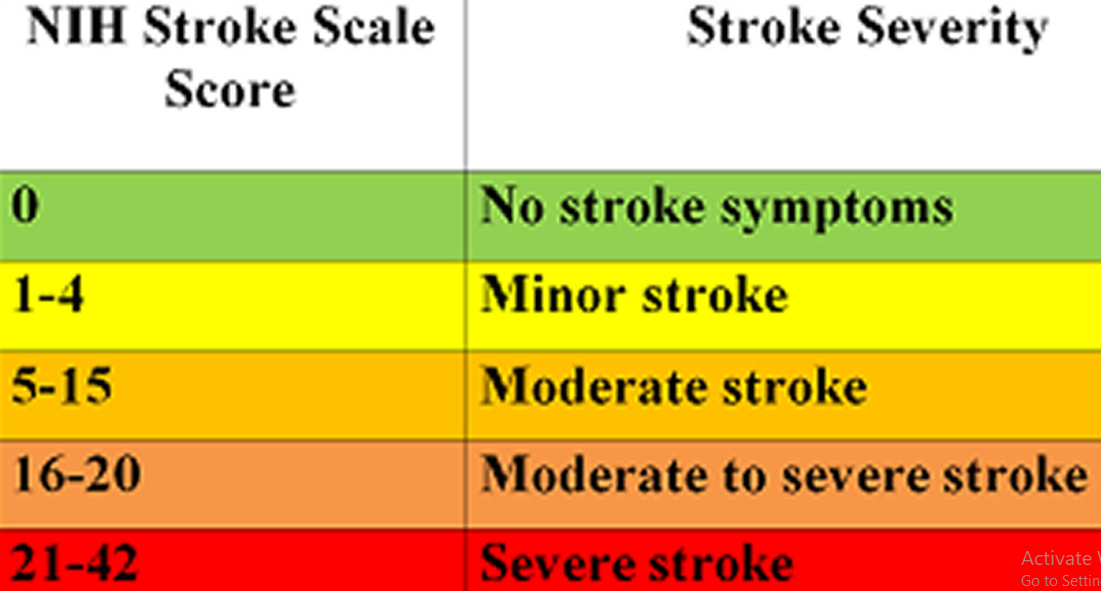Introduction
Stroke is a medical emergency that can have devastating consequences, making timely and accurate diagnosis essential for effective treatment. The National Institutes of Health Stroke Scale (NIHSS) is a critical tool that has revolutionized stroke assessment and management. In this article, we will explore the NIH Stroke Scale, its significance in the field of medicine, and its impact on the lives of stroke patients.

Understanding the NIH Stroke Scale (NIHSS)
The NIH Stroke Scale, commonly referred to as NIHSS, is a clinical assessment tool used by healthcare professionals to evaluate the severity of a stroke in a patient. It was developed by the National Institute of Neurological Disorders and Stroke (NINDS) to provide a standardized and objective method for assessing the effects of a stroke.
The Purpose of NIHSS
The primary purpose of the NIH Stroke Scale is to:
-
Assess Stroke Severity: NIHSS helps healthcare providers determine the extent of neurological impairment in a stroke patient. This information is crucial for deciding on the appropriate treatment and care plan.
-
Facilitate Treatment Decisions: The scale assists in making informed decisions about the administration of thrombolytic therapy, interventional procedures, and other stroke treatments.
-
Monitor Progress: It is used to track changes in a patient's condition over time, which can be valuable in assessing the effectiveness of treatment.
-
Research and Clinical Trials: The NIHSS is also used in research and clinical trials related to stroke management and recovery.
Components of the NIH Stroke Scale
The NIHSS consists of 11 items that assess various aspects of neurological function, including consciousness, eye movement, facial palsy, limb strength, coordination, and language. Each item is scored based on the patient's performance, with higher scores indicating more severe impairment.

The Scoring System
The scores for each item range from 0 to 4 or 0 to 2, depending on the nature of the assessment. The total NIHSS score can vary from 0 (indicating no neurological deficit) to 42 (indicating the most severe impairment). Lower scores on the NIHSS generally suggest a less severe stroke.
The Role of NIHSS in Stroke Treatment
The NIHSS is a critical tool in the acute phase of stroke management, where time is of the essence. Here are some ways in which it influences treatment decisions:
1. Eligibility for Thrombolytic Therapy: The administration of tissue plasminogen activator (tPA), a clot-dissolving medication, is time-sensitive and can only be given to eligible patients within a certain time frame. The NIHSS score helps determine eligibility.
2. Decision for Endovascular Treatment: In some cases, endovascular treatments like thrombectomy (the removal of blood clots) are performed. The NIHSS score can help assess the need for such procedures.
3. Admission and Monitoring: The NIHSS score is used to determine whether a patient should be admitted to a stroke unit or intensive care for specialized care and monitoring.
4. Long-Term Prognosis: In addition to its immediate implications, the NIHSS score also offers insights into a patient's long-term prognosis and the potential for disability.
The Impact of NIHSS on Stroke Patient Outcomes
The NIH Stroke Scale has had a profound impact on stroke patient outcomes. Here's how it contributes to better results:
1. Faster Treatment Decisions: The NIHSS streamlines the assessment process, allowing healthcare providers to make quicker and more accurate decisions about treatment options.
2. Improved Patient Selection: By identifying patients who are likely to benefit from specific treatments, the NIHSS ensures that the right interventions are offered to the right individuals.
3. Enhanced Monitoring: The scale enables continuous monitoring of a patient's condition, facilitating adjustments in treatment plans as needed.
4. Research and Innovation: Data collected using the NIHSS in clinical trials and research studies has contributed to a deeper understanding of stroke and the development of new treatment approaches.
NIHSS Beyond Acute Stroke Care
While the NIH Stroke Scale plays a crucial role in acute stroke care, its applications extend beyond the emergency department. It can be used to track a patient's recovery progress over time, which is valuable for rehabilitation and long-term care planning. Additionally, it is a valuable tool for clinical research, enabling scientists to assess the effectiveness of new stroke treatments and interventions.
The Future of Stroke Assessment
As technology continues to advance, the future of stroke assessment holds promise. Telemedicine, artificial intelligence, and remote monitoring are all playing a role in improving stroke diagnosis and treatment, and the NIHSS will likely continue to evolve alongside these innovations.
Conclusion: Saving Lives with the NIH Stroke Scale
The NIH Stroke Scale is a lifesaving tool that has revolutionized stroke assessment and management. Its standardized approach to evaluating stroke severity has led to faster treatment decisions, improved patient outcomes, and a deeper understanding of stroke care. In the ever-evolving field of medicine, the NIHSS remains a critical instrument for ensuring that stroke patients receive the timely and appropriate care they need. It is a testament to the power of standardized assessment tools in the pursuit of saving lives and reducing the impact of stroke on individuals and their families.




No comments:
Post a Comment